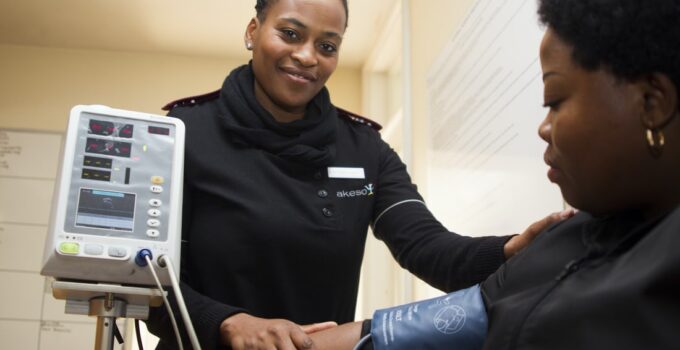Insulin pumps | Glucose levels for Diabetic | Flash monitoring | Blood glucose meters | Non-invasive glucometers | New insulin preparations | Glucose level sensor | Computer algorithm | New ways to deliver | Diet | Watson supercomputer | New beta cells
____________
1. Insulin pumps
Insulin pumps are one of the most modern and advanced methods of delivering insulin to the human body with diabetes. An individual basal insulin delivery rate can be programmed in the pump, and a bolus for food can be administered in various ways, depending on the biochemical composition of the food.
____________
2. Continuous monitoring of glucose levels is a very useful technique
Continuous monitoring of glucose levels is a very useful technique that allows for seven days or more to monitor the level of glucose in the intercellular fluid. This is important because various factors influence glucose levels: food, exercise, illness, and other situations. Real-time monitoring can also warn if glucose levels change too quickly.
____________
3. Glucose monitoring, the so-called “flash monitoring”
New types of glucose monitoring, the so-called “flash monitoring” also allow you to assess the dynamics of glucose levels in the intercellular fluid, however, in order to obtain data, it is necessary to bring the reader to the sensor. A very useful device, but since this type of monitoring is not continuous, the device cannot itself warn, for example, about a sharp decrease in blood glucose levels.
check here first before it will go worse
____________
4. Modern blood glucose meters
Glucometers are the basis for self-monitoring of blood glucose levels. Modern blood glucose meters tend to be as accurate, fast as possible and require as little blood as possible for measurement.
____________
5. Non-invasive glucometers
Non-invasive glucometers – they have been discussed for a long time. Giants such as Alphabet Holding (Google) and Apple have made statements about the development of such devices, however, so far these works have not brought such desired results. All prototypes of non-invasive glucometers cannot yet be replaced by the accuracy of measuring blood glucose with a glucometer.
____________
6. New insulin preparations
New insulin preparations are being actively developed by pharmaceutical companies. There are already more concentrated types of insulin on the market (U-300, U-500 is preparing to enter the market, for people with very low sensitivity to insulin), longer-acting (more than 40 hours). The development of faster-acting insulin than existing ultra-short-acting insulin analogues is underway.
____________
7. Glucose level sensor, an insulin pump and a computer algorithm
The closed loop system or artificial pancreas consists of a glucose level sensor, an insulin pump and a computer algorithm that analyzes the sensor readings and calculates the dose of insulin. A computer algorithm responds to changes in glucose levels by adjusting insulin delivery. In theory, human participation is not required; the algorithm controls everything itself.
____________
8. Computer algorithm that can monitor blood glucose levels overnight
New insulin pumps are already equipped with a computer algorithm that can monitor blood glucose levels overnight, turning off the flow of insulin when there is a tendency to hypoglycemia. An insulin pump is being prepared for sale, which itself will be able to control glucose levels at night using the built-in algorithm.
____________
9. New ways to deliver insulin to the body
New ways to deliver insulin to the body. Inhalation insulin already exists on the market, but it has a number of drawbacks related to dosing accuracy and possible side effects. Scientists hope to come up with a way to protect insulin molecules from the aggressive effects of enzymes in the gastrointestinal tract and create, for example, capsules with insulin.
____________
10. Diet for people with diabetes.
Studies of recent years show that in different people, changes in glucose levels after meals may be different. There is evidence that the composition of the intestinal microflora affects the blood glucose level after eating. Some products cause a more rapid increase in blood glucose in a particular person, while other products cause a slower increase. Scientists suggest creating an individual diet based on an analysis of the intestinal microflora.
____________
11. Computer applications about food.
There are a huge number of different databases on the amount of carbohydrates in various foods and dishes in restaurants around the world. There are also a number of applications that estimate the amount of carbohydrates from a photograph, however, they are not very accurate.
____________
12. Computer applications for people with diabetes.
Computer applications are being developed that would store information about changes in glucose levels after consuming various foods or after exercise, and then offer successful tactics of behavior in a similar situation.
____________
13. Watson supercomputer
Watson supercomputer is a computer with great analytical capabilities, some of which will be aimed at creating algorithms that will create the most accurate programs for calculating insulin doses, correcting glucose levels during sports, and preventing episodes of hypoglycemia.
____________
14. New beta cells that produce insulin.
Stem cells are cells from which you can grow anything you like, including new beta cells that produce insulin. Different methods are also being studied to create special “boxes” where new beta cells could be placed and protected against immune cells of a person with type 1 diabetes.
____________
15. Various interventions in the autoimmune reaction
Various interventions in the autoimmune reaction are actively studied in people with a high risk of developing type 1 diabetes. Scientists are trying to create drugs that would block particularly aggressive immune cells without causing damage to healthy cells.


